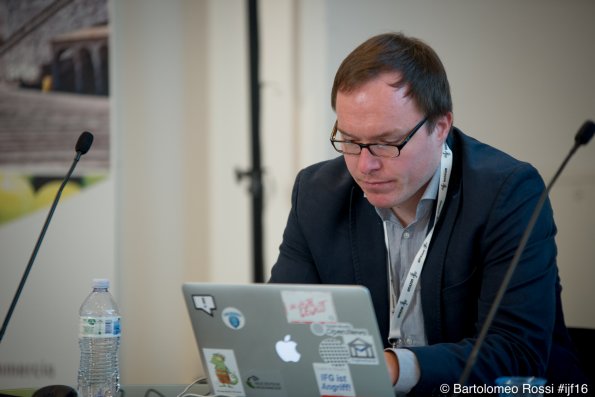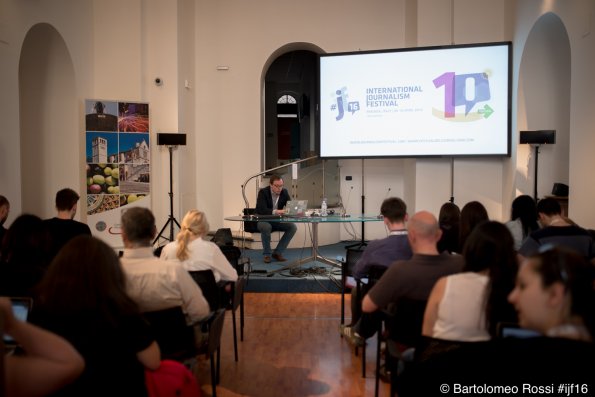What possibilities do journalists have when structuring their investigative work? Daniel Drepper, senior reporter at Correctiv.org – German nonprofit investigative centre aiming to give citizens access to information – shared useful tips on his presentation “Investigative Research 101”.

Finding focus
The most difficult part of starting an investigation is to find a subject that is exciting. This, however, should be done quickly as time should not be wasted on this first stage. Journalists should follow their interests and have “some inspiration on what topics to investigate”. Drapper also recommends a lot of reading and focus on “what and who do I need?” for the investigation to be conducted.
What triggers investigation
Drepper said that in the articles he reads, there is always a question at the end of it that cannot be answered. When a problem is recurrent, then it becomes a “structural problem”, as Drepper called it. The mission of investigative journalism is to probe deeper into such structural problems.
Read, steal, and ask
“I like stealing” Drepper said with a smile while adding that he always looks at other investigations, at what has already been done, what data and sources journalists have used in previous research, and what structural problems should be focused on. There is nothing dishonest about that, he explained. Involving experts on what should be investigated can prove to be very useful: journalists are encouraged to prepare and ask two or three questions to find out what experts recommend that should be investigated in their specific area of expertise.
A good investigation always starts with building a hypothesis and planning the story. The hypothesis – from which journalists should extract as much as possible – helps journalists during the whole process of investigation. An essential point is always to write down what has already been found – be it contacts, sources, data, extracts of documents, or just simple ideas, Drepper said. During the course of investigation, important things might be forgotten by the journalists.
Minimum story
Considering that an investigation might take from six weeks to six months, it is essential that, before starting, journalists should think of the minimum story – their expectation on the case they are investigating on. Envisaging the story is also part of the preliminary process: journalists should ask themselves what is already available, what internal sources and data they can use, and if it is realistic to obtain them, because they do not want to end up empty-handed. Writing memos also helps keep track of their idea. This preliminary stage is essential because if it turns out that there are no documents or data, it might be better to reconsider what to investigate. Drepper also suggests summarizing everything in one or two pages and sending them to the editors insisting on why that particular story is worth investigating on.

Preparing a thorough beat
Drepper listed several several important points when creating a beat: developing PDF files with sources’ names, calling a high number of people (in one of the investigations he did, his team contacted 300-500 people) or, as he put it, “the more people you call, the better”, and resorting to special interest magazines. One of the major principles in journalism is “to peel the onion”, that means going from the outside to the inside. Most of the time journalists simply contact a professor, an expert, an NGO, and someone who is eager to share their experience. But this is not enough. Journalists should find “inside people”, they should take the next step – go beyond “the outside” – and know what is already written about the topic they are investigating, and be aware of the names of the forms, regulations, and laws they need to use. Documents are an essential part of a thorough beat – thus, journalists should know their exact names, focus and authors, and look for similar documents that might help.
Sources
When it comes to finding sources, Drepper suggested going to former employees and using Premium LinkedIn for finding them. Then, in order to approach sources, journalists should:
- never start with asking questions, instead, they should introduce themselves
- engage in a conversation to build trust
- make the source feel valuable – tell them they find their industry and field of knowledge fascinating and want to know more about it
- tell the source what they have already found on that topic and what people they have already contacted
- always try to make the conversation personal – it is better if they meet the source in person, in a bar, for example.
The three questions Drepper always asks in the end are: What did I forget? Are there any documents? Who else should I meet? Try to meet someone new every week for lunch or coffee, he said: many people rely on the same people, but this does not make your reporting better.